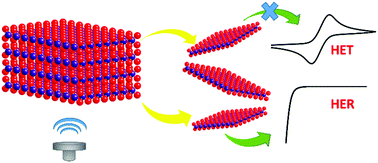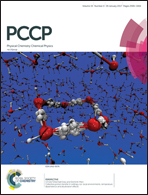A study of the effect of sonication time on the catalytic performance of layered WS2 from various sources†
Abstract
WS2 is a transition metal dichalcogenide (TMD) with many potential applications from catalysis to sensing, and is of interest both in its bulk and monolayer forms. There is discrepancy in the literature on the reported electrocatalytic effect of layered WS2. In this study, we examine two issues: the influence of the WS2 source and the effect of a common agitation technique via ultrasonication on the observed electrocatalysis. Bulk WS2 from five different chemical providers demonstrated different HER electrocatalytic performances. Changes to the duration of sonication result in different HER electrocatalytic performances across all WS2 materials. This may affect the efficiency of subsequent modifications from which these TMD materials serve as precursor materials. On the other hand, while WS2 materials from different suppliers showed varying HET performances, changes in sonication time have no significant effect on their HET performances. Both the WS2 source and the duration of sonication have different implications for the electrochemical performance of bulk WS2 and thus represent important variables to consider in research involving WS2.



 Please wait while we load your content...
Please wait while we load your content...